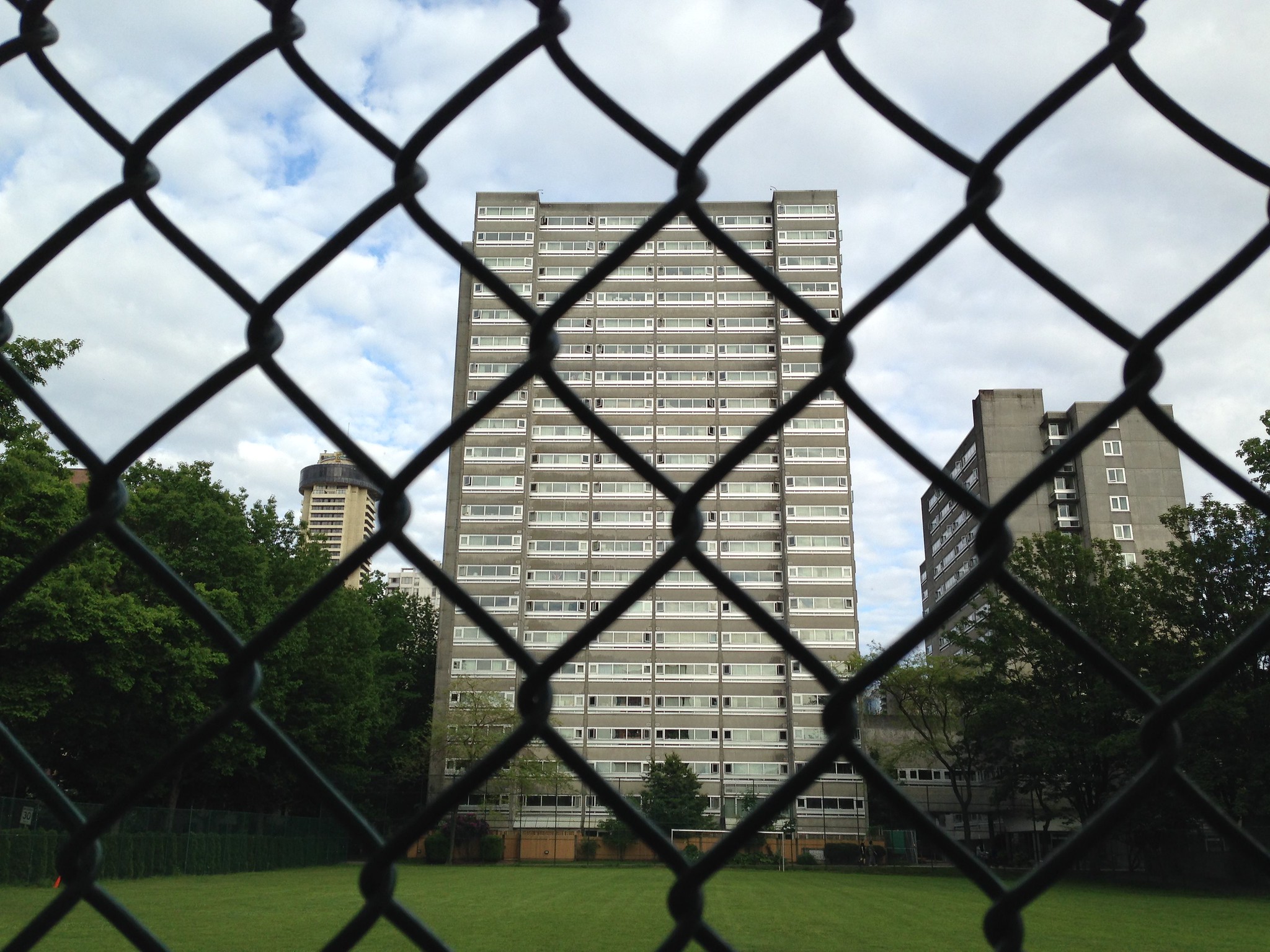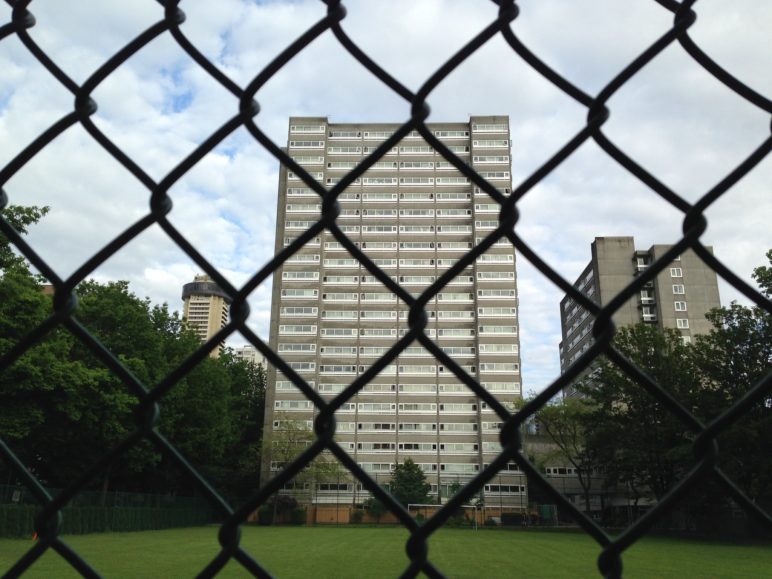Mayor Lisa Helps of Victoria is hoping British Columbia’s activist new housing minister will change provincial laws to make it easier to get new homes built in her city, one that is renowned for its tourist-luring British colonial architecture, its growing homeless population, and its lengthy public process to get any kind of new housing approved.
Mayor Helps knows it won’t be easy.
“It’s going to take bold, courageous action from the province, not tinkering around the edges,” said Mayor Helps

“It’s going to take bold, courageous action from the province, not tinkering around the edges,” said the mayor, who, in a recent blog post, called on the BC government to change the law to make housing approvals easier.
It appears Mayor Helps may get her wish. A number of signals in recent months indicate that Attorney General and Housing Minister David Eby—a lawyer and one-time civil liberties advocate—is ready to adopt some measures similar to the wave of new pro-housing laws that various American states have introduced in recent years. “We’re looking at absolutely anything to address the affordable-housing crises,” Minister Eby notes. “We are looking at American jurisdictions.”
Local Barriers to New Housing
British Columbia’s move comes as states and provinces have increasingly become alarmed at the way new housing—an essential component of a functional economy—is stymied time after time by local city councils that are often more attentive to their already-housed and existing residents than their homeless or future ones.
Eby has already shown impatience with local barriers to new housing. He scuffled with the city council in Penticton, a smaller city in the interior of British Columbia, vowing that he will over-rule their decision to refuse renewal of a permit for a local homeless shelter. The province intervened this February in a Supreme Court of Canada case involving Ontario, siding with the province of Ontario argument’s that provinces should maintain their right to control the powers of cities.
And Eby’s ministry, with support from the federal Canada Mortgage and Housing Corporation (CMHC), is currently supporting an “expert panel on housing and affordability,” headed by former deputy premier Joy MacPhail. That group has been gathering information about actions that American states have taken to over-ride local city councils’ resistance to many forms of new housing.
The panel, which issued some interim findings in December, is due to share their recommendations in a couple of months. Those involved are tight-lipped about what exactly will be in it. But some believe that an obvious first step would be for the NDP government, which started requiring cities two years ago to produce “housing needs” reports that are due this May, could move to the next level and start requiring them to show how they are meeting those needs.
Getting Above the Fray of Project-by-Project Planning Decisions
Producing housing needs reports would follow in the path of a state like California, for example, which has required cities since 1969 to produce what is called a Housing Element, as part of their general community planning. In recent years, the state has also pushed cities much harder to make space for new apartments, laneways (typically called accessory dwelling units), and other types of non-detached-house dwellings.
“There could be an attempt to use those [BC] housing-needs reports as a possible lever,” says Nathanael Lauster, a sociology professor at the University of British Columbia who specializes in housing. “And there is probably going to be some attempt to tie community plans to outright zoning, rather than rezoning.”
That’s something Victoria’s mayor would like to see. Lisa Helps said her council spends an inordinate amount of time going through public hearings and rezonings for proposed buildings, even when they comply with the overall community plan—four hours recently for one project with 56 units. Those new projects could be moved along much faster if they could be approved without the usual time-consuming rezonings and public hearings, she said.
Professor Lauster, one of many local experts who presented information to the expert housing panel, said the province is likely even more inclined to take a bigger role after a number of anti-development councils were elected in 2018 among the 21 cities that make up Metro Vancouver.
In one of the more memorable decisions in the region after that election, the District of North Vancouver turned down an affordable-housing project that was not going to displace any existing renters (it was on empty land next to a community center), was being proposed by a non-profit that planned to rent out the apartments for an amount significantly below current market rates, and was going to reserve part of the housing for seniors.
Other new councils have also turned down various types of projects, even after years of negotiations between the builder and city staff aimed at ensuring they fit with the community.
“CMHC and the expert panel is not going to think Metro Vancouver is doing a good job [of meeting housing needs]” because of that pattern, said Professor Lauster.
Municipal-law expert Bill Buholzer is predicting something similar.
“A couple of years ago, the Local Government Act required a housing-needs report. They’re due in May and the province prescribed a standard methodology. I’m starting to think that’s where the province is headed with this – the other shoe may be dropping fairly soon,” said Buholzer. “I’m expecting something more than just a process. I think there will be targets.”
Changing the Game in BC with Cues from the West Coast
British Columbia’s moves on this reporting front will be part of a sea change in the United States and Canada, as provinces, states, and even national governments get concerned that a key part of their country’s economic success—providing housing for all levels of workers and citizens—is being left in the hands of local politicians who are too beholden to their home-owning, frequently anti-development voter base.
In response, states and cities across the United States have been proposing new types of legislation aimed at encouraging or requiring lower-cost forms of housing as conditions continue to get worse for both renters and aspiring homebuyers.
“It’s been something that started on the West Coast but it’s moving more broadly into the country as housing costs have grown precipitously in so many cities nationwide and people are just looking for solutions,” said Brooks Rainwater, the director of the Center for City Solutions at the National League of Cities. The YIMBY movement—Yes in My Backyard—that started in San Francisco and quickly spread was part of the reason for that, he said. “You saw a groundswell of support happening.”
California has had so many recent changes to state laws related to housing that at least one law company tracks them year by year. Others organizations offer advice on how to use the various new laws and policies to fight neighborhood opposition groups.
State efforts—or would-be efforts—encompass a wide range of laws, directives, policies and processes for city land-use decisions.
California and Oregon have been the leaders in a movement that UC Davis professor Chris Elmendorf describes as one that has made progress in a few blue states. But there have been various efforts of different kinds in more than a dozen states, including, as recently as late March, North Carolina.
California, Connecticut and New Hampshire have a judicial-review process that puts the onus on city councils to prove they had good reasons for turning a project down, he said. (Pro-housing groups, particularly among the new YIMBY movement, are using that process to fight for new projects with financial support from tech companies on occasion.)
Other states like Massachusetts, Rhode Island, and Illinois have an administrative-review system where a council decision to reject a low-cost-housing project can be reversed.
Some states grant regulatory exemptions from some laws, like environmental reviews, for affordable housing—especially as anti-development groups have turned to those kinds of policies to block new projects.
And then there are broad pieces of legislation that either enable cities to do certain things, like require inclusionary zoning, or institute mandatory statutes. One example of the latter is California’s requirement that a city selling land has to offer it first to anyone offering to build low-cost housing.
Another is the type of law where the state says the local government must provide room for some type of housing—accessory dwelling units, for example – and sets out a version of what the local rules should look like at a minimum, but then leaves it to the cities to adjust.
There has been a wave of that type of action.
California, New Hampshire, Oregon, Utah, Washington, Rhode Island, and Vermont now require, to varying degrees, cities to allow accessory dwelling units.
Several states have bills in the works aimed at allowing other home types—duplexes, triplexes, or more—to be included without barriers in any single-detached-house zones. Oregon has passed that kind of legislation successfully, while California, Connecticut, Minnesota, Maryland, Montana, Nebraska, New Hampshire, North Carolina, Vermont, Virginia, and Washington have considered, or are still deliberating on legislation.
Provinces Flex to Make Way for Growth
Meanwhile, Canada’s provinces do not have nearly as much history with forms of intervention as the United States. But there is still some.
Ontario, the largest province, has been the most aggressive when it comes to giving itself the power to overrule cities on land-use issues. Since 2006, Ontario has required that cities in its densest urban part of the province, called the Greater Golden Horseshoe, accommodate growth in the area without expanding past their greenbelts. The province requires municipalities to adopt density targets and to update local plans as a way of making sure they meet them.
Since 2018, a new Ontario policy statement has also required cities to have bylaws that allow for forms of housing like basement suites and accessory dwelling units (often called laneways, infills, or granny flats in Canada). As well, it requires cities to allow for denser housing around transit stations.
“It’s a way to get municipalities to kind of grow together. The big idea was that intensification is better than sprawl,” says Gregg Lintern, the chief planner for the City of Toronto. That’s the kind of law that helps central cities by requiring suburban areas to take on a share of the needed housing, instead of allowing them to isolate themselves and force others to try to fill the hole.
Lintern said that, while the results haven’t achieved utopia, there are now a lot more forms of housing being built throughout the region than just single-detached homes.
The province can also issue what is called a minister’s zoning order, or MZO, to override city land-use rules. Cities have sometimes asked for those, noted Lintern, as a way of getting a needed new use in place quickly. But the MZOs have also come under fire, particularly when greenlighting projects without due diligence or meaningful public conversation. In Lintern’s words, “It often is a balance of interests between local perspectives and a wider perspective.”
It works for the higher-level government to set targets. But the local governments should figure out how to meet them. “There are many, many ways to make local decisions and meeting those goals.”
It’s also true that states need to retain some level of control. They can’t pass a generic piece of legislation and sit back, thinking that will solve everything. States need to show they’re willing to penalize cities that continue to try to shut out new and affordable housing, says Chris Elmendorf, a law professor at the University of California at Davis who specializes in housing policy.
The first state efforts at pre-emptive legislation aimed at improving housing production didn’t do much because they were too loose and there was too little enforcement. That’s slowly changing, he said, as states come up with ever-more-refined rules and show they’re willing to go to court to enforce them.
Also, “it’s little procedural things that turn out to make a difference.” California now allows third parties to take cities to court over decisions that rejected low-cost housing. Because third-party pro-housing groups can now sue, “you are now seeing the attorneys writing memos to council—‘Here are your obligations under the law,’” said Elmendorf.
Those are all factors that British Columbia’s provincial government will have to consider as it decides whether and how to wade into some sort of control over housing and land-use decisions.
Until now, the biggest moves made by this province included the 1973 law that created the Agricultural Land Reserve, a piece of legislation that protects farmland throughout BC, but specifically prevents many cities in the Vancouver region from simply sprawling endlessly into greenfield land. The other, much less ambitious, move was the 1996 Growth Strategies Act that re-legalized regional planning. That has forced at least some kind of conversation among cities in a region about how they were going to accommodate future growth.
But, in spite of some consensual efforts over the years, regional districts (similar to counties in the United States) have no power to force any municipality to provide additional housing.
The most recent round of Statistics Canada population estimates showed that only six cities within the district—Vancouver, Surrey, Delta, Maple Ridge, and the small but increasingly dense nodes of New Westminster and the City of North Vancouver—had accommodated as many people as the regional plan had forecast for them. The District of North Vancouver, forecast to grow by 12 percent, saw only a two-percent population increase. The wealthy suburb of West Vancouver actually went backwards, losing population, according to numbers compiled by New Westminster Councilor Patrick Johnstone.
Like other pro- housing advocates in the region, Johnstone asks why provincial and federal governments don’t exert more pressure on municipalities to make room for newcomers—maybe by tying money for big transit projects to meeting housing targets.
Transit-oriented development is something that Eby’s expert housing panel is also looking at.
Ultimately, how far British Columbia goes will depend on how severe an economic and social problem Eby and his NDP government think is being created by the current system of endless wrangling over almost every new form of housing. In other places, state politicians have come to believe, as have many housing advocates, that the time for complete local control has ended.
“I do think it’s important for people to understand that local governments tend to primarily concerned about their own residents and especially the residents who own,” says Professor Tim Iglesias, a University of San Francisco professor specializing in housing and property law who sits on the California Fair Employment and Housing Council. “But you do need to be concerned about the general welfare.”
Eby is paying attention to that balancing act. “It would be a real problem not to work with cities co-operatively first. To say they’re failing and force it down their throats skips a step.”
But, he adds, “I know there’s a political challenge for cities to approve the housing that’s needed.” And that’s where the province can help out.











Rene Gourley
Thanks for the interesting and informative read.
As one of the people who engaged with the District of North Vancouver throughout the extensive process that lead to council ultimately turning down the proposed development next to our community centre, I’m saddened to see the District taking it on the chin again. The proposal was not, in fact, for “affordable housing,” but merely for “non-market housing,” and that was not defined anywhere in the proposal; in a municipality that is distinctly unaffordable, “non-market” could have simply meant less unaffordable, but still out of reach for any normal family. As a community, we were concerned about the loss of our asset to a group of investors with no guarantee of a net benefit to the municipality; portraying the decision as pure NIMBYism is inaccurate.
Since that decision, I am pleased to point out that the District has found a new partner and the current proposal for the land includes more family-oriented units, and a clear definition of affordability. This proposal has completed its public hearing, and will receive our support when it comes before council.
Thank-you,
Rene Gourley
Chair, Delbrook Community Association